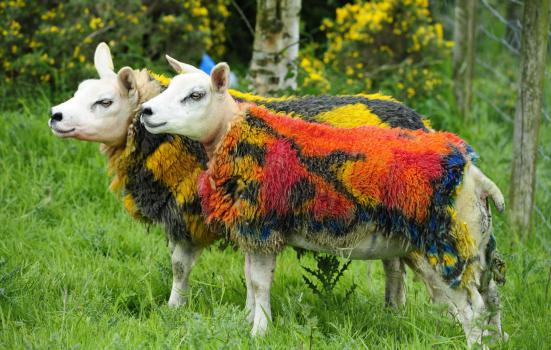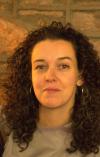A lack of business skills and access to equipment was holding artists in Dumfries and Galloway back. Clare Hanna explains the origins of Upland and how it supports artists.

It’s cold outside and the climate is changing rapidly. In this case I’m talking about the arts world rather than the planetary environment. This is particularly true in the vast, sparsely populated and astonishingly beautiful region of Dumfries and Galloway in south west Scotland. It’s an area that according to local anecdote has more artists and makers per head than anywhere else in Scotland. At the same time it’s been ravaged by recession, has high unemployment and low skills and earnings. Business start-ups have stagnated and the population is both ageing and falling, with many young people heading for the cities.
Yet the 150,000 residents include a tremendous pool of creative ability that has allowed the growth of Spring Fling, Scotland’s contemporary visual art and craft open studios event. Coming up for its fourteenth year this May, it showcases the work of more than 90 competitively selected artists and makers, attracting around 40,000 studio visits and earning £1.5 million for the local economy.
They value being able to talk to people about managing their time, running a small business, preparing for an exhibition or approaching galleries
It’s a great success and we could have kept on plowing the same furrow for decades to come. But Spring Fling has always been about more than the event itself and has developed a number of schemes to address some of the unmet needs of creative people living and working in the region. In an era of sharply declining public funding, and in a part of the country where there are few businesses to look to for sponsorship, it was increasingly recognised that we had to find our own solutions. We would argue that this is not just good for the arts, but essential to the creation of a sustainable local economy that provides fulfilling careers and thriving communities.
Our response has been to evolve into Upland, a new membership organisation, which was soft-launched in October but has its official opening celebration at a symposium in February. Our aim is to deliver festivals, events, training, networking, support and opportunities as part of a year-round programme that will benefit the artists, our communities and the economy.
Upland embraces the open studios weekend as our flagship event and is building on schemes pioneered as part of Spring Fling, but with a far broader remit. Among the first fruits is Emerge, which has seen us pair up three young artists and makers with well-established mentors for a full 15 days of individually tailored assistance and the chance to exhibit in Spring Fling. What’s immediately clear from the successful applicants is how much they value being able to talk to people about managing their time, running a small business, preparing for an exhibition or approaching galleries. Rural areas can be isolating, and the mentoring introduces people to the wider arts community, which can be a source of abundant encouragement and help.
At the same time we are running a Modern Makers project, which will see Sam Booth, creator of unique and eco-friendly small buildings, working with a group of young people throughout the year. The idea is partly to provide experience, but above anything else, to fire imaginations. These kinds of approaches are essential if we are going to make young people ambitious about having creative careers.
Making these things possible involves partnerships and networks developed around a sense of common purpose. Fortunately we are able to collaborate with the locally focused Holywood Trust and Archie Sutter Watt Trust, both of which help the young. We also engage closely with other arts events and organisations such as the Wigtown Book Festival.
It’s not just the young who need help. A fundamental problem for many craft makers, textile designers and others can be lack of access to modern equipment. This is something we have addressed head-on through a collaboration with Glasgow-based MAKLab which has led to the setting up of a digital fabrication studio in Dumfries. It offers affordable access to 3D printers, laser cutters and other equipment, along with tuition. The tutors also act as inspiration. It’s great to be able to offer sessions with someone like Iona Barker, who was brought up locally and became Head of Wardrobe at the Scottish Exhibition and Conference Centre, where she created costumes for Beyoncé and “gave Prince his ruffles”.
Many artists and makers lack business skills, so we aim to provide access to areas including PR and photography as well as offering sessions with a gallery owner on presenting their work. We are also interested in encouraging mutual self-help and I look in sheer amazement at how superb some of our members are at social media. A subject we will explore at the forthcoming symposium is time banking so people can start to make use of their exchangeable skills.
This highlights a key issue: our work is about collective benefits. Individual artists, and our membership as a whole, are much more likely to achieve their ambitions if Dumfries and Galloway earns the reputation of being a superb and exciting place to live, work and visit.
Clare Hanna is Director of Upland (maternity cover).
www.weareupland.com




